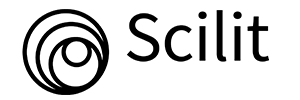
Journal Basic Info
**Impact Factor calculated based on Google Scholar Citations. Please contact us for any more details.Major Scope
- Kidney Cancer
- Palliative Care
- Ovarian Cancer
- Hematology
- Radiation Oncology
- Carcinomas
- Gastrointestinal Cancer
- Melanoma/Skin Cancer
Abstract
Citation: Clin Oncol. 2019;4(1):1609.DOI: 10.25107/2474-1663.1609
Molecular Imaging of RAGE Expression in Human Glioblastoma
Yared Tekabe, Jordan Johnson, Qing Li, Rashmi Ray, Vivek Rai, Jerry Kokoshka and Lynne L Johnson
Department of Medicine, Columbia University Medical Center, USA
Department of Biotechnology, Institute of Life Sciences, India
Department of Technology Ventures, Columbia University, USA
*Correspondance to: Lynne L Johnson
PDF Full Text Research Article | Open Access
Abstract:
Introduction: The binding of Receptor for Advanced Glycation Endproducts (RAGE) and its ligands stimulate inflammation and angiogenesis and thereby contribute to tumor growth and metastasis. We developed an anti-RAGE antibody with good target binding and blocking properties. We tested the hypothesis that uptake of the radiolabeled antibody localizes and quantifies tumor RAGE expression in mice with implanted glioblastoma cell lines.Methods: Inhibition of p-Akt and p-stat-3 was measured in U-87MG human glioblastoma cells by Western blot. For imaging, male athymic nude (J:NU) (n=13) mice, 5-6 weeks of age were injected subcutaneously in the right shoulder with U-87MG glioma cells (1 × 106). Four weeks later, mice were injected with 4.81 MBq 111In-anti-RAGE F(ab’)2 (n=7) or nonspecific IgG F(ab’)2 (n=6). Mice were imaged on a small animal Single-Photon Emission Computed Tomographic (SPECT)/Computed Tomographic (CT) camera 48 h after injection (time based on blood pool clearance). After in-vivo imaging, the tumors were explanted, radioactivity counted, and sectioned for histological and immuno histochemical examination. Tumor activity from the scans was quantified using In Vivo Scope software.Results: Anti-RAGE antibody showed blocking by Western blot analysis. All tumor-bearing mice injected with 111In-anti-RAGE F(ab’)2 fragments showed focal areas of tracer uptake in the tumor. Quantitative tracer uptake in the tumor from scans showed significantly greater uptake of 111In-anti-RAGE F(ab’)2 (1.44 ± 0.49) compared with 111In-specific IgG F(ab’)2 (0.56 ± 0.25; P=0.006). Ex-vivo gamma counting showed greater tumor uptake of 111In-anti-RAGE F(ab’)2 (3.92 ± 1% ID/g) compared with 111In-nonspecific F(ab’)2 (1.21 ± 0.29; P<0.001). Dual immunofluorescence staining showed RAGE co-localization with GFAP-positive cells and macrophages and CD31-positive cells.Conclusion: We showed anti-RAGE antibody with radiolabel can measure the extent of RAGE expression in glioblastoma and showed its property to block tumor.
Keywords:
Glioblastoma; RAGE; SPECT/CT imaging
Cite the Article:
Tekabe Y, Johnson J, Li Q, Ray R, Rai V, Kokoshka J, et al. Molecular Imaging of RAGE Expression in Human Glioblastoma. Clin Oncol. 2019; 4: 1609.













